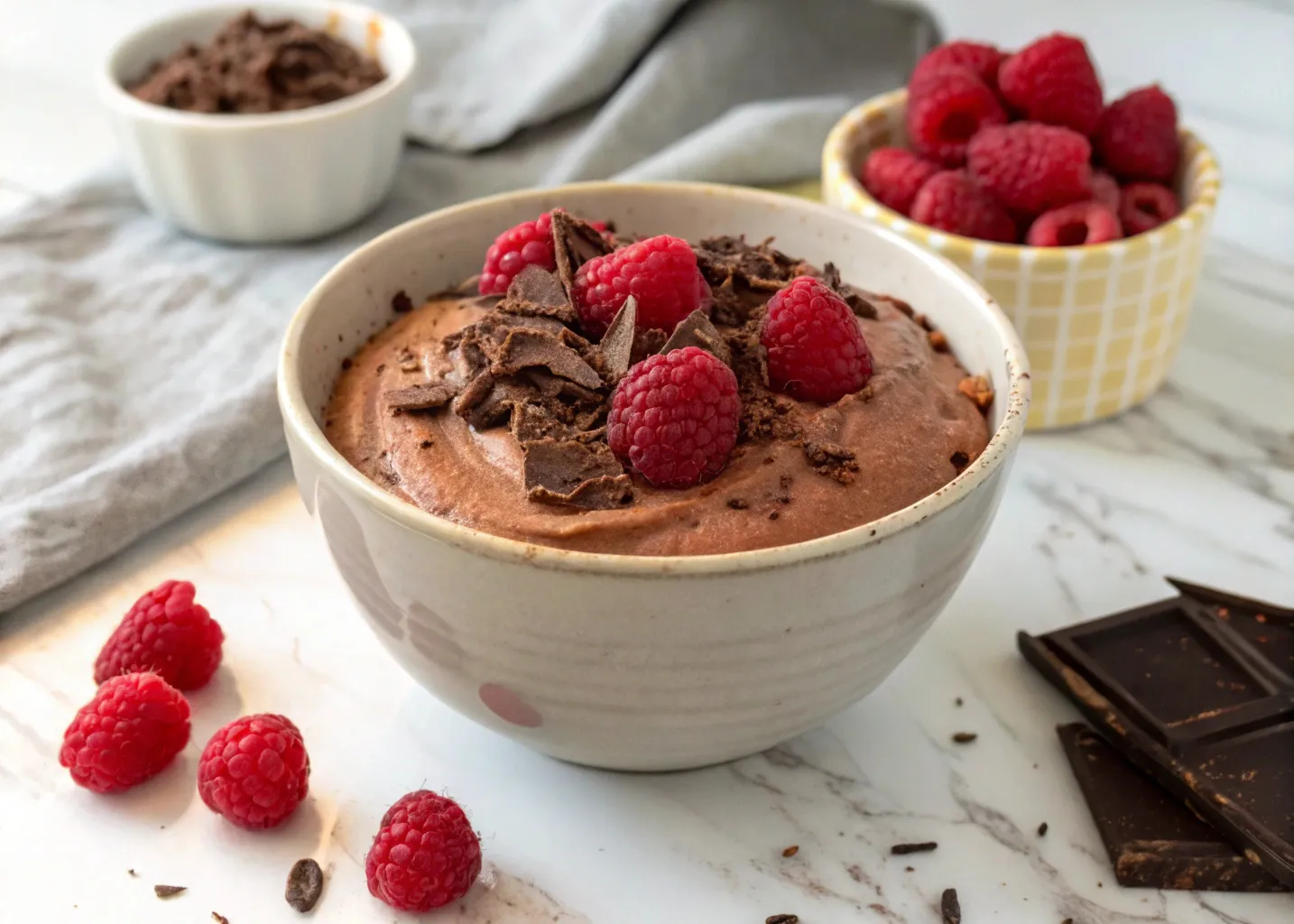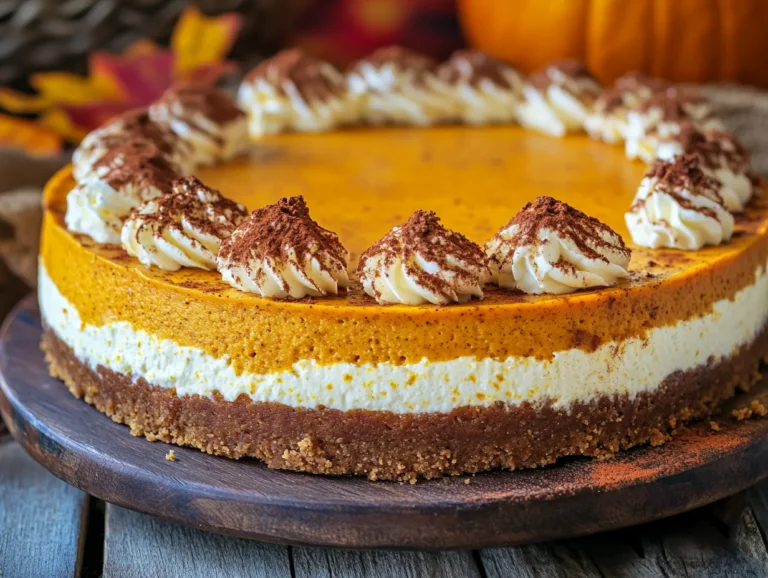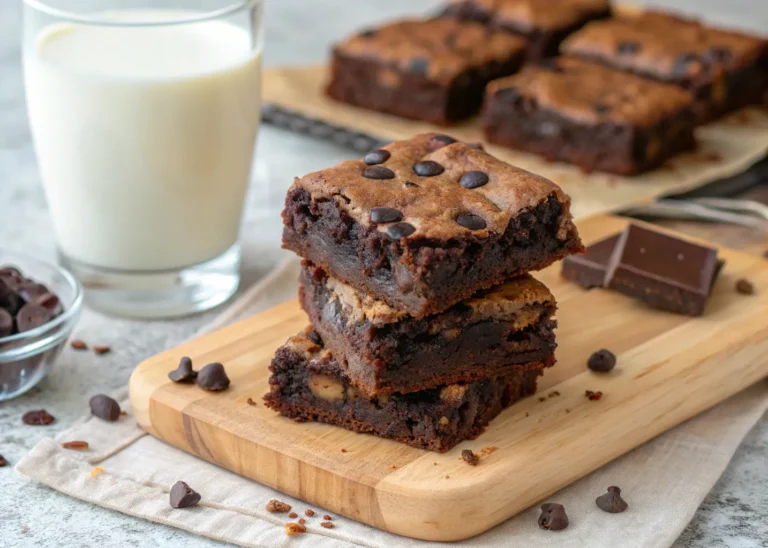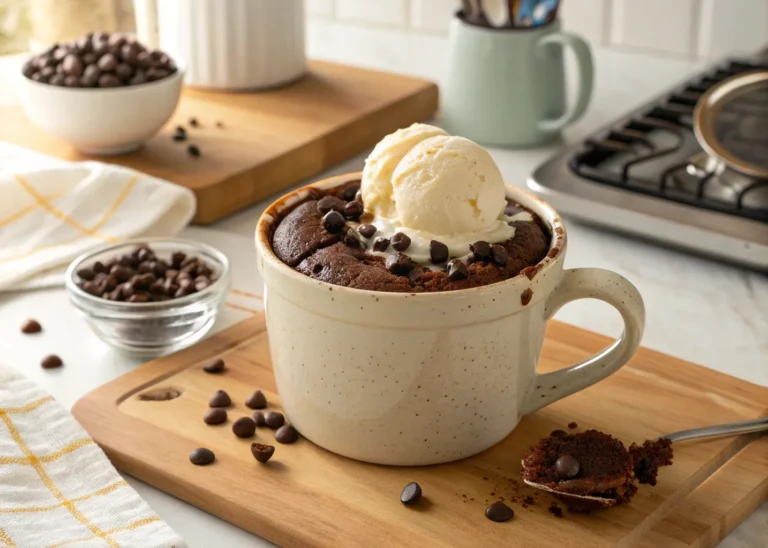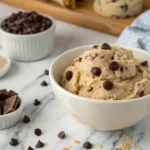If you’re craving a decadent chocolate dessert but want to skip the guilt, you’re in for a game-changer. Cottage cheese chocolate mousse is the secret high-protein treat you didn’t know you needed. Unlike traditional mousse loaded with cream and sugar, this version delivers all the silky, chocolatey satisfaction—with a serious health upgrade.
Yes, we’re talking about blending cottage cheese into a smooth, dreamy chocolate mousse that’s rich in protein, low in sugar, and ready in under 10 minutes. Sounds impossible? It’s not.
This guide covers:
- How cottage cheese blends into a perfectly creamy texture
- What chocolate and sweeteners to use for the best flavor
- Tips to avoid common mousse-making mistakes
- Step-by-step recipe instructions
- FAQs and pro secrets for success
Let’s dive into next part—why cottage cheese is the perfect base for this healthy dessert.
Why Cottage Cheese Works in Chocolate Mousse
The Unique Texture of Cottage Cheese
Cottage cheese may not be your go-to dessert ingredient, but don’t underestimate its potential. When properly whipped, it becomes luxuriously smooth—resembling the consistency of whipped ricotta or mascarpone. That means it mimics the creamy mouthfeel of traditional mousse, without using heavy cream or egg yolks.
Here’s why it works:
- It blends to a silky texture when processed
- Its mild flavor takes on chocolate beautifully
- It creates structure and volume—no gelatin required
With the right blending technique, your mousse won’t taste “cheesy” at all. Instead, it’ll taste like a creamy, chocolate-rich pudding with a protein punch.
Nutritional Benefits Compared to Traditional Mousse Bases
Most traditional mousse recipes rely on heavy cream, sugar, and sometimes eggs. While delicious, they’re not exactly light or protein-friendly. Cottage cheese flips the script.
Here’s a quick comparison:
| Ingredient | Calories (per ½ cup) | Protein (g) | Fat (g) | Sugar (g) |
|---|---|---|---|---|
| Cottage Cheese (Low-Fat) | 90 | 13 | 2 | 3 |
| Heavy Cream | 400 | 2 | 43 | 3 |
| Mascarpone | 240 | 2 | 24 | 1 |
Cottage cheese provides more than 6x the protein and a fraction of the fat. That’s why this mousse isn’t just dessert—it’s a smart snack or post-workout recovery treat.
Whether you’re watching your sugar intake, counting macros, or simply aiming for a more balanced lifestyle, this high-protein dessert hits every mark. Plus, it’s naturally gluten-free and can be made refined sugar-free depending on your sweetener choice.
Up next, we’ll explore the essential ingredients to make this mousse taste just as indulgent as the classic version.
The Best Ingredients for Cottage Cheese Chocolate Mousse
Choosing the Right Cottage Cheese: Smooth vs. Chunky
Not all cottage cheese is created equal—and choosing the right one is the key to silky, spoonable mousse.
Here’s what to look for:
- Full-fat or 2% cottage cheese: These provide the best texture and mouthfeel. Fat-free varieties tend to be watery and bland.
- Small curd over large curd: Easier to blend and smoother overall.
- Unflavored and unsalted: Stay away from flavored versions; you want a clean base that allows the chocolate to shine.
Pro Tip: If you can only find chunky or large-curd cottage cheese, don’t worry. A high-speed blender or food processor will smooth it out completely. But for best results and less blending time, go with small curd.
What Type of Chocolate to Use (Dark, Semi-sweet, Cocoa Powder)
Chocolate is the soul of your mousse—so quality matters.
Here are your top options:
1. Cocoa Powder (Unsweetened)
- Great for a low-sugar option
- Blends well without adding extra fat
- Pairs beautifully with natural sweeteners like maple syrup
2. Dark Chocolate (70% and above)
- Rich, intense flavor
- Melts smoothly into the mixture
- High in antioxidants
3. Semi-Sweet Chocolate Chips or Bars
- Slightly sweeter and more familiar for classic mousse lovers
- Perfect for dessert-style presentation
How much to use?
Use between 2 to 3 tablespoons of cocoa powder, or 60g of melted chocolate depending on your taste preferences. You can even blend both for depth of flavor.
Optional Add-ins for Flavor Depth:
- A splash of vanilla extract for warmth
- A pinch of sea salt to enhance sweetness
- A dash of instant espresso to intensify chocolate notes
Keep your ingredients minimal but high-quality. Because this mousse isn’t about overcomplicating—it’s about balance, taste, and that rich chocolate satisfaction without the crash.
In the next part, we’ll walk step-by-step through how to make cottage cheese chocolate mousse like a pro—smooth, creamy, and perfect every time.
How to Make Cottage Cheese Chocolate Mousse
Step-by-Step Instructions
This isn’t your average mousse recipe. You won’t need to whip cream, temper eggs, or fold anything delicately. All you need is a blender and a few clean ingredients. Here’s the full process from start to finish.
Prep Time: 5 minutes
Chill Time: 30–60 minutes
Servings: 2–4 (depending on portion size)
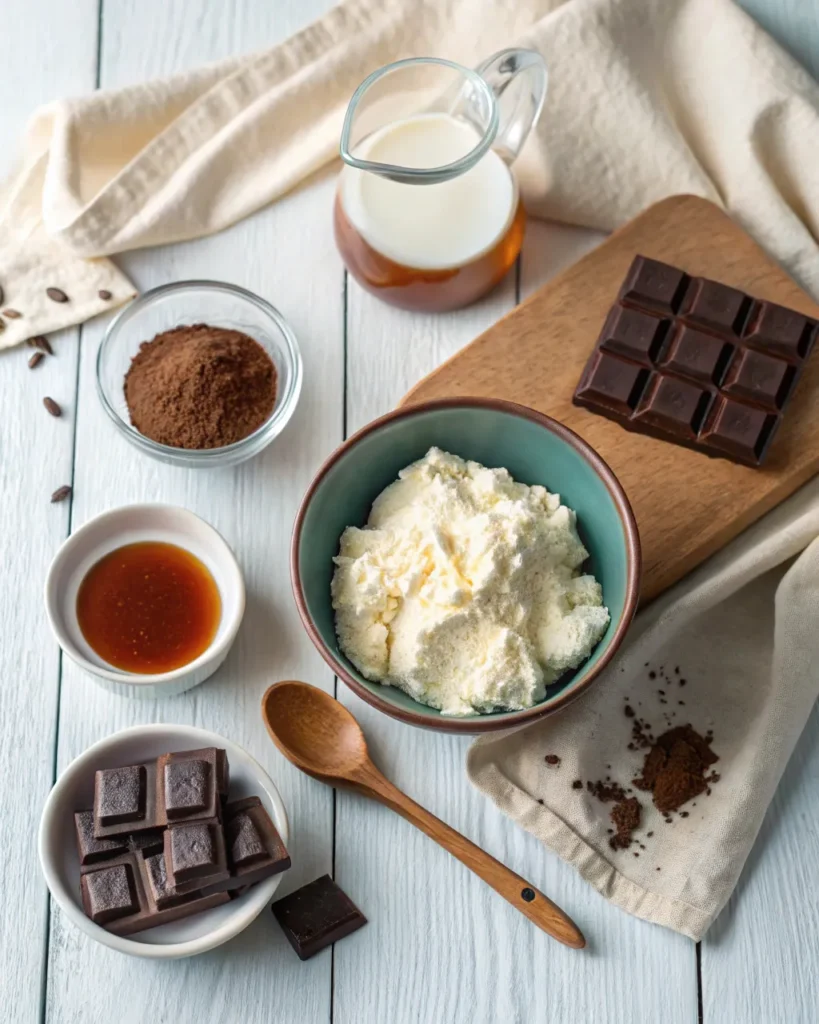
Ingredients:
| Ingredient | Quantity |
|---|---|
| Cottage cheese (2% or full-fat, small curd) | 1 cup |
| Unsweetened cocoa powder | 2–3 tbsp |
| Maple syrup or honey (to taste) | 2–3 tbsp |
| Vanilla extract | 1 tsp |
| Pinch of sea salt | Optional |
| Optional add-ins | Espresso powder, orange zest, nut butter |
Instructions:
Step 1: Blend the Cottage Cheese
Add your cottage cheese to a high-speed blender or food processor. Blend until completely smooth. This step is critical—take your time. Scrape down the sides and blend again until no curds remain.
Step 2: Add the Chocolate Elements
Add cocoa powder or melted chocolate (cooled slightly if melted), your sweetener of choice, vanilla extract, and sea salt. Blend again until fully incorporated and ultra-creamy.
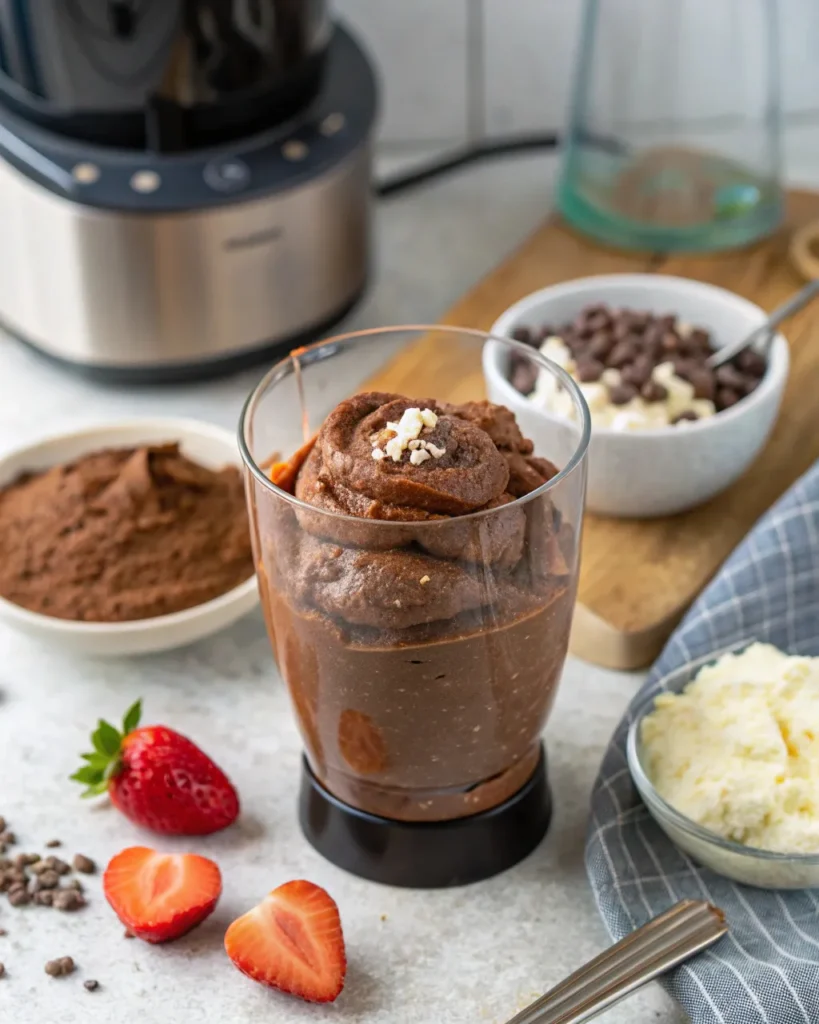
Step 3: Taste and Adjust
Now’s the time to tweak. Want it sweeter? Add more maple syrup. Craving bold flavor? Add a touch of espresso or cinnamon.
Step 4: Chill the Mousse
Spoon the mousse into small jars or bowls. Cover and refrigerate for at least 30 minutes. This allows it to set, thicken, and develop deeper flavor.
Step 5: Garnish and Serve
Top with your favorites: shaved dark chocolate, fresh berries, chopped nuts, or a dollop of Greek yogurt for contrast.
Optional Add-ins for Flavor Enhancements
This recipe is flexible. Here are a few add-in ideas if you’re feeling creative:
| Add-In | Effect |
|---|---|
| Instant espresso powder | Deepens the chocolate flavor |
| Almond or peanut butter | Adds richness and a nutty note |
| Orange zest | Adds a bright citrus contrast |
| Chili powder or cayenne | Creates a spicy Mexican-chocolate twist |
These flavor twists let you reinvent this dessert anytime without changing its core health value.
Looking for another easy cottage cheese dessert? Try this edible cottage cheese cookie dough recipe — it’s high in protein, naturally sweetened, and just as simple to make.
How to Whip Cottage Cheese for a Smooth Mousse
Using a Food Processor or High-Speed Blender
The key to turning cottage cheese into a creamy mousse base lies in how you process it. You don’t need any fancy techniques—just the right appliance and a bit of patience.
Choose Your Tool Wisely:
- Best Option: High-speed blender (like a Vitamix or Ninja)
- Good Alternative: Food processor with sharp blades
- Avoid: Hand mixers or immersion blenders—they won’t fully eliminate curds
Blending Instructions:
- Start with just the cottage cheese. This is important. Don’t add cocoa or sweeteners yet.
- Blend on high for 1–2 minutes.
- Stop and scrape down the sides of the container.
- Blend again until completely smooth—no lumps or texture.
If the mixture is too thick to blend:
- Add 1–2 tablespoons of milk or plant-based milk
- Blend again until it looks like thick yogurt or mousse
What You Should See:
A glossy, thick, pudding-like consistency with no curd specks visible. That’s when you know it’s ready for chocolate and sweetener additions.
Achieving the Silkiest Texture Without Heavy Cream
Traditional mousse relies on heavy cream for its silky feel. This version gets there without the added fat.
Here’s how to get a velvety texture naturally:
- Opt for 2% or full-fat cottage cheese to ensure rich creaminess.
- Blend until the mixture heats slightly from friction—yes, that’s normal and helps emulsify the texture
- Add melted chocolate or cocoa only after the cottage cheese is whipped to avoid grittiness
Texture Pro Tip: If you’re still seeing graininess after 2 minutes, your blender might not be strong enough. Run it in shorter pulses and scrape more frequently.
The beauty of cottage cheese mousse is that the smoothness is totally under your control—you can make it as light or rich as you like by adjusting blend time and optional mix-ins.
Sweeteners & Flavor Adjustments
Natural Sweeteners (Maple Syrup, Honey, Stevia)
Your mousse doesn’t need refined sugar to taste rich and indulgent. In fact, natural sweeteners not only keep it clean, they allow the chocolate flavor to shine through without overpowering sweetness.
Here are the best choices:
| Sweetener | Flavor Profile | Recommended Amount |
|---|---|---|
| Maple syrup | Warm, earthy sweetness | 2–3 tbsp |
| Honey | Floral, slightly tangy | 1.5–2 tbsp |
| Stevia or Monk Fruit | Zero-calorie, concentrated | ¼ tsp or to taste |
Tips for Success:
- Always blend your sweetener into the mousse—don’t stir it in later.
- Taste after blending and adjust based on your preference.
- Avoid artificial sweeteners with strong aftertastes—they can clash with cocoa.
Low-Sugar Option:
Use unsweetened cocoa powder and stevia for a virtually sugar-free mousse that still satisfies a chocolate craving.
Flavor Variations (Mint, Orange Zest, Peanut Butter)
This mousse is endlessly customizable. You can transform the base flavor with a single ingredient and take it in exciting directions—without messing up the texture or nutrition.
Here are a few delicious twists:
| Add-In | Flavor Boost |
|---|---|
| Peppermint extract (¼ tsp) | Think thin mint mousse |
| Orange zest (½ tsp) | Bright and citrusy |
| Peanut or almond butter (1 tbsp) | Nutty, decadent richness |
| Espresso powder (¼ tsp) | Deepens chocolate flavor |
| Cinnamon or chili powder (pinch) | A bold and warm twist |
How to Use Them:
Add these mix-ins during the final blending phase, after your cottage cheese and chocolate are combined. This ensures even distribution and a clean, balanced flavor.
Flavor Layering Tip:
Begin with a small amount—extracts and citrus zest can easily overpower the flavor.
These simple tweaks let you reimagine this mousse as dozens of different desserts, all starting from the same easy base.
Chilling and Serving Suggestions
How Long to Chill for Best Texture
Once your mousse is blended to perfection, it’s tempting to dive in right away—but don’t skip the chill time. Chilling helps the mousse set, intensifies the chocolate flavor, and improves the texture dramatically.
Here’s what you need to know:
- Minimum chill time: 30 minutes
- Ideal chill time: 1–2 hours
- Maximum storage: Up to 3 days (covered in fridge)
Why it matters:
Chilling allows the cocoa (or melted chocolate) to bind with the protein in the cottage cheese, creating a firmer, pudding-like texture that holds its shape. You’ll also notice the flavor becomes richer and more balanced after a short rest in the fridge.
Quick tip: Use shallow bowls or ramekins to spread the mousse and speed up chilling by increasing surface area.
Garnishing Ideas: Berries, Shaved Chocolate, Nuts
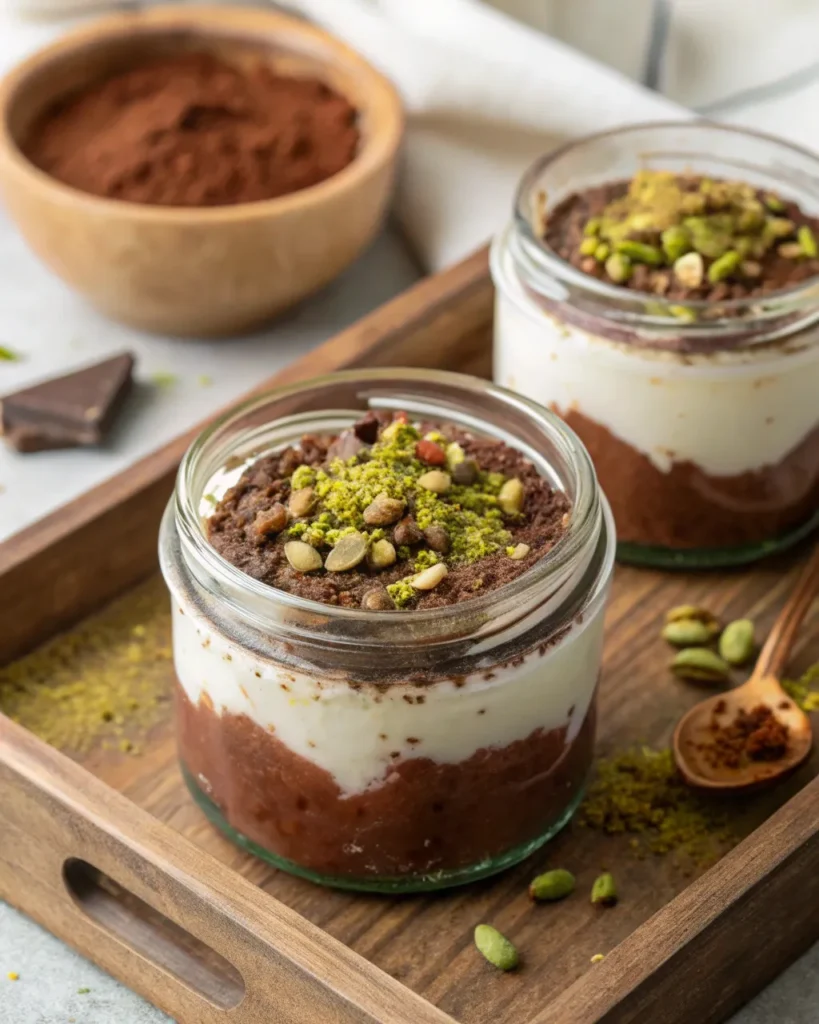
This is where the mousse becomes Instagram-worthy. Toppings add contrast, crunch, freshness, and visual appeal—all without needing extra skill or prep time.
Here are some stunning, flavor-packed garnishing ideas:
| Garnish | What It Adds |
|---|---|
| Fresh raspberries or strawberries | Tartness and color pop |
| Shaved dark chocolate | Texture and visual richness |
| Crushed pistachios or almonds | Crunch and nuttiness |
| Coconut flakes | Tropical flair |
| Greek yogurt swirl | Tangy balance and elegance |
| A sprinkle of sea salt | Salted chocolate vibe |
Pro Presentation Tip:
Use a piping bag or spoon mousse into clear glasses or jars. Layer with berries or nuts for a parfait-style dessert that looks as good as it tastes.
Make It Kid-Friendly:
- Top with mini chocolate chips
- Serve in small cups with a drizzle of peanut butter
Make It Dinner-Party Ready:
- Add a touch of edible gold or mint leaves
- Serve with biscotti or a crisp wafer on the side
This mousse transitions effortlessly from post-gym snack to elegant dinner finale—all depending on how you present it.
Common Mistakes to Avoid When Making Mousse
Even though cottage cheese chocolate mousse is easier than traditional mousse, there are still a few pitfalls to avoid. These mistakes can ruin the texture, flavor, or presentation—so let’s tackle them head-on.
Overprocessing or Underblending
The Mistake: Blending too quickly or not long enough
The Result: Lumpy texture or grainy consistency
How to Fix It:
- Blend the cottage cheese by itself first until ultra-smooth. This creates the perfect base.
- Don’t rush it—smoothness takes 1–2 full minutes on high speed.
- Use a high-powered blender or quality food processor, as lower-end models often fail to fully smooth out the curds.
Pro Tip: If your mousse isn’t smooth enough, strain it through a fine-mesh sieve after blending.
Using the Wrong Cottage Cheese Texture
The Mistake: Using large-curd or dry cottage cheese without adjusting
Why It Matters:
- Large curds are harder to break down
- Dry cottage cheese may lack creaminess
Fixes:
- Choose small-curd, 2% or full-fat cottage cheese
- If using drier versions, add a splash of milk or almond milk (1–2 tbsp) during blending
Overloading with Liquids
The Mistake: Adding too much milk, syrup, or extract
The Result: Mousse turns runny instead of firm
Solution:
- Stick to measured amounts of sweeteners or flavor extracts
- If your mousse becomes too thin, add a teaspoon of cocoa powder or refrigerate longer to firm it up
Skipping the Chill Time
The Mistake: Eating the mousse right after blending
Why It Fails:
- Warm mousse tastes flat
- Texture needs time to set
The Fix:
- Chill it for at least 30 minutes, but ideally 1–2 hours
- If you’re in a rush, place it in the freezer for 10–15 minutes—but don’t forget it!
Using Low-Quality Cocoa or Chocolate
The Mistake: Using cheap cocoa powder or artificial chocolate flavoring
The Outcome: Bitter, chalky, or artificial taste
Pro Fix:
- Use unsweetened Dutch-processed cocoa or a high-quality melted dark chocolate bar (minimum 70% cocoa content)
- Avoid chocolate syrup—it doesn’t offer the depth needed
FAQs About Cottage Cheese and Chocolate Mousse
Can you make mousse from cottage cheese?
Yes, absolutely. Cottage cheese can be blended into a smooth, creamy base that mimics traditional mousse without using eggs or heavy cream. When whipped properly with cocoa and sweetener, it creates a luscious, protein-rich mousse with a velvety texture.
Is cottage cheese good with chocolate?
Surprisingly, yes. Cottage cheese has a mild flavor that easily absorbs the richness of chocolate. When blended, it provides the body and creaminess of mousse while allowing the chocolate to take center stage. It’s a clean, balanced combo perfect for health-conscious dessert lovers.
Can I whip my cottage cheese?
Yes, and it’s the key to making the mousse work. Whipping cottage cheese in a high-speed blender or food processor breaks down the curds and transforms it into a smooth, creamy base. This whipped version is ideal for desserts like chocolate mousse, dips, or even spreads.
What are common mistakes when making mousse?
Top mistakes include:
- Insufficient blending of the cottage cheese can leave behind unwanted lumps.
- Adding too much liquid, resulting in runny texture
- Using poor-quality chocolate or cocoa
- Skipping chill time, which prevents proper setting
Avoiding these ensures a consistent and satisfying mousse every time.
What are the three basic components of mousse?
In traditional mousse, the three components are:
- Base – often chocolate or fruit purée
- Aerator – like whipped cream or egg whites
- Binder/Stabilizer – such as gelatin or egg yolks
In this healthier version, cottage cheese acts as both the base and binder, while blending creates natural aeration—making it lighter and simpler with fewer ingredients.
Does cottage cheese melt in baking?
Cottage cheese doesn’t melt like cheddar or mozzarella, but it softens and blends well when heated. In mousse, however, there’s no need to bake—it’s a no-cook recipe. The cottage cheese is blended and chilled, not heated, preserving its texture and nutritional value.
Nutritional Facts and Storage Tips
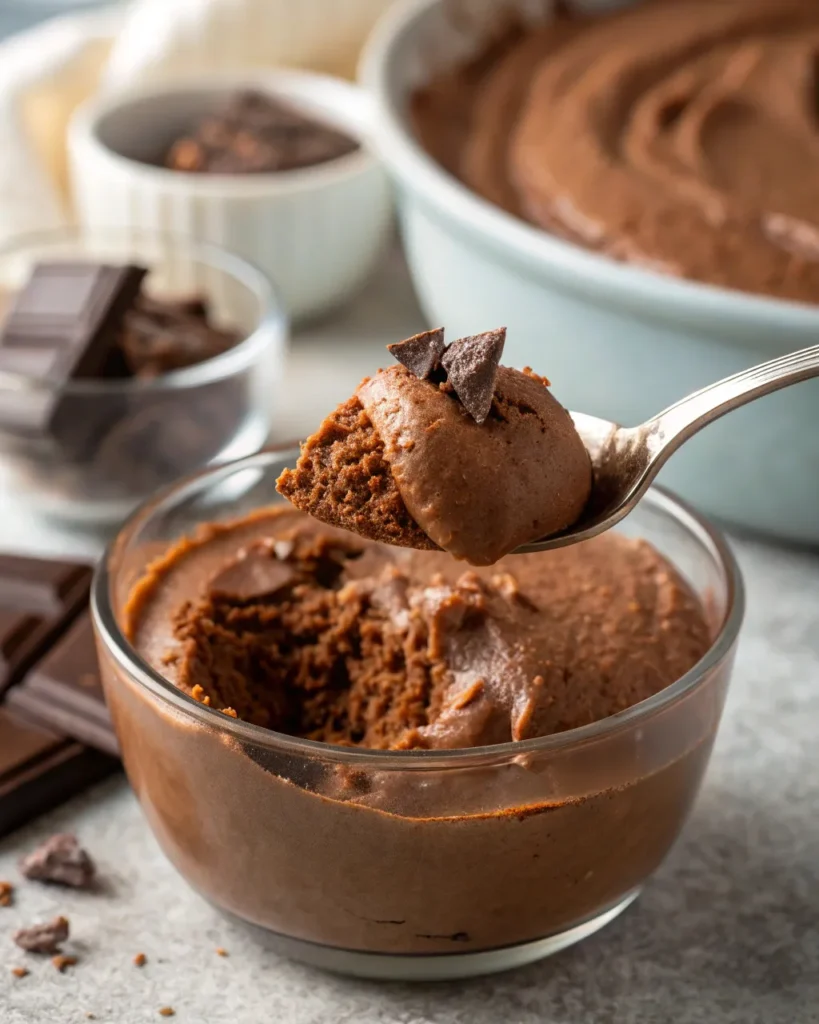
Macronutrient Breakdown (Per Serving)
Depending on your exact ingredients and portion size, cottage cheese chocolate mousse is not only rich and satisfying—it’s smart, too. Here’s a typical nutritional snapshot per ½-cup serving:
| Nutrient | Amount |
|---|---|
| Calories | 130–170 kcal |
| Protein | 11–14 g |
| Fat | 4–7 g |
| Carbohydrates | 10–14 g |
| Sugars | 6–8 g (depending on sweetener) |
| Fiber | 1–2 g |
Why It’s a Nutritional Win:
- High protein: Great for muscle recovery and satiety
- Lower in sugar: Compared to classic mousse or pudding
- Low in saturated fat: No heavy cream needed
- Gluten-free: Naturally so, no adjustments required
- Calcium-rich: Thanks to the dairy content
Flexible for diets: You can make it refined sugar-free, keto-friendly, or even dairy-free by using plant-based cottage cheese alternatives (yes, they exist).
How Long It Lasts in the Fridge
This mousse holds up surprisingly well in the refrigerator. The dense, creamy texture sets beautifully and actually improves after resting.
- Fridge shelf life: Up to 3 days in an airtight container
- Best texture: After 1–2 hours of chilling
- Meal-prep approved: Great for making in advance for snacks or dessert throughout the week
Pro Tip: Use small glass jars or sealed ramekins for portioned, ready-to-grab treats.
Can It Be Frozen?
Yes—but with conditions.
- Texture after thawing: Slightly grainier than fresh
- Best practice: Freeze only if you’re okay with a softer, ice-cream-like finish
- How to freeze:
- Store in freezer-safe containers
- Thaw in the fridge overnight before eating
- Stir gently to restore creaminess
Better Option: Make a frozen mousse pop by freezing the blended mousse in silicone molds or ice cube trays. These make healthy, high-protein chocolate popsicles with minimal effort.
Conclusion
If you thought chocolate mousse had to be loaded with cream, sugar, and effort—this recipe proves otherwise. Cottage cheese chocolate mousse delivers rich, velvety indulgence with a fraction of the calories and none of the guilt.
It’s:
- High in protein
- Low in sugar
- Quick to prepare
- Perfectly customizable
Whether you’re craving a post-dinner treat, meal-prep snack, or macro-friendly dessert, this mousse fits the bill. It’s smooth, chocolatey, and surprisingly nutritious.
So grab that blender, choose your favorite cocoa, and elevate your dessert game—with clean ingredients and real flavor.

Cottage Cheese Chocolate Mousse
Ingredients
Equipment
Method
- Blend cottage cheese on high until completely smooth.
- Add cocoa powder, maple syrup, vanilla, and sea salt. Blend again until creamy.
- Taste and adjust sweetness or thickness as needed.
- Spoon into serving bowls or jars.
- Chill in the fridge for 30–60 minutes before serving.


